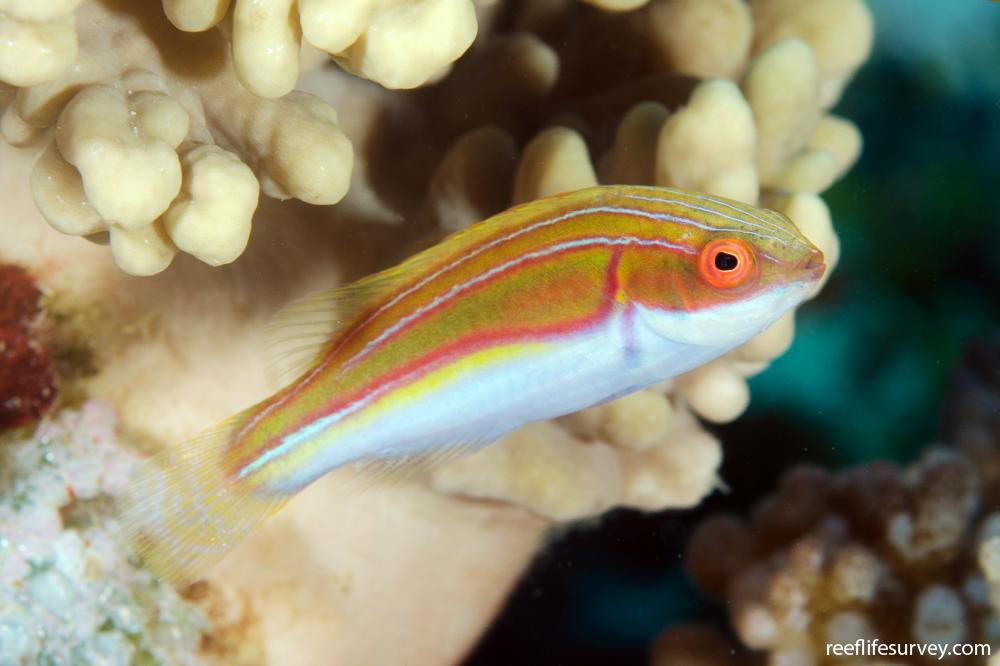Cirrhilabrus laboutei
Laboutes wrasse | Laboute's Fairy-wrasse | Magenta-streaked Wrasse | Northern Purple WrasseSame Genus
Distribution
Tropical Indo-Pacific
Description
Pair of stripes from behind eye, the first running along the base of dorsal fin to tail, the second slightly further down the body and stopping before rear of dorsal, a third stripe connecting to second stripe at gill cover then curves down behind pectoral fin and runs along mid body to tail fin. In males stripes are magenta and paired with a blue stripe, and in females stripes are thinner, and more red. Back brown and underside pale below bottom line. Juveniles with dark spot on upper tail base. Generally more shy and secretive than other Cirrhilabrus species, more closely associated with the substrate.
Information
Max Size: 12 cm
Sea Temperature Range: 19.8-29.4°C
Depth: 7-55m
Habitat Generalization Index: 3.76
Also referred to as the SGI (Species Generalisation Index), this describes the habitat niche breadth of the species. Species with values less than 15 are found in a relatively narrow range of reef habitat types (specialists), while those over 25 may be found on most hard substrates within their range (generalists). Learn more here.
Conservation and Rarity
IUCN Status: Least Concern
Occurrence: Frequent (13.3% of sites)
Occurrence describes how often the species is found on surveys within its distribution. It is calculated as the % of reef sites surveyed by RLS divers across all the ecoregions in which the species has been observed
Abundance: Many (15 per transect)
Abundance is calculated as the average number of individuals recorded per RLS transect, where present.
Edit by: Joe Shields
















